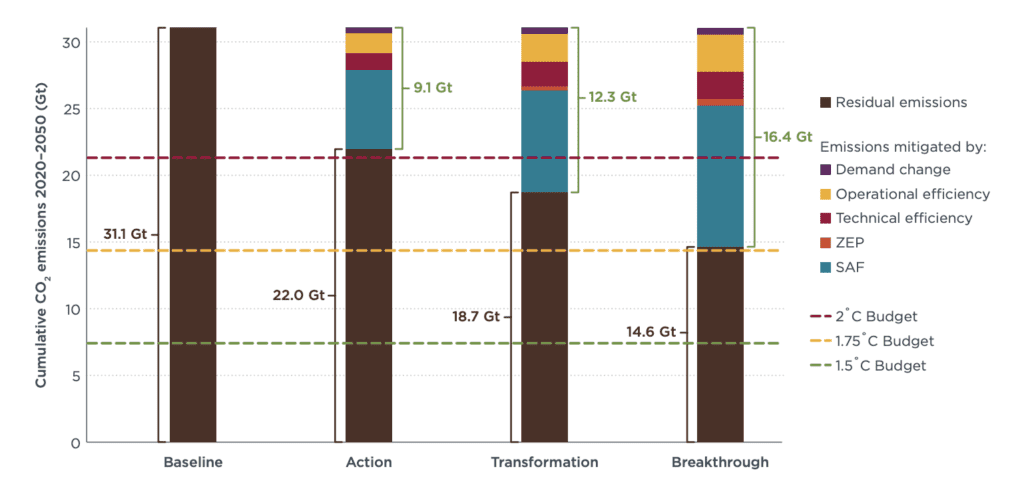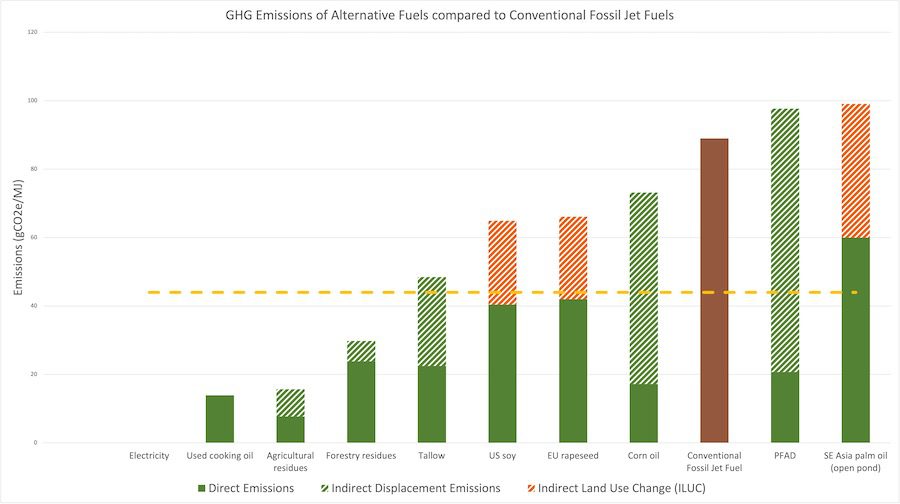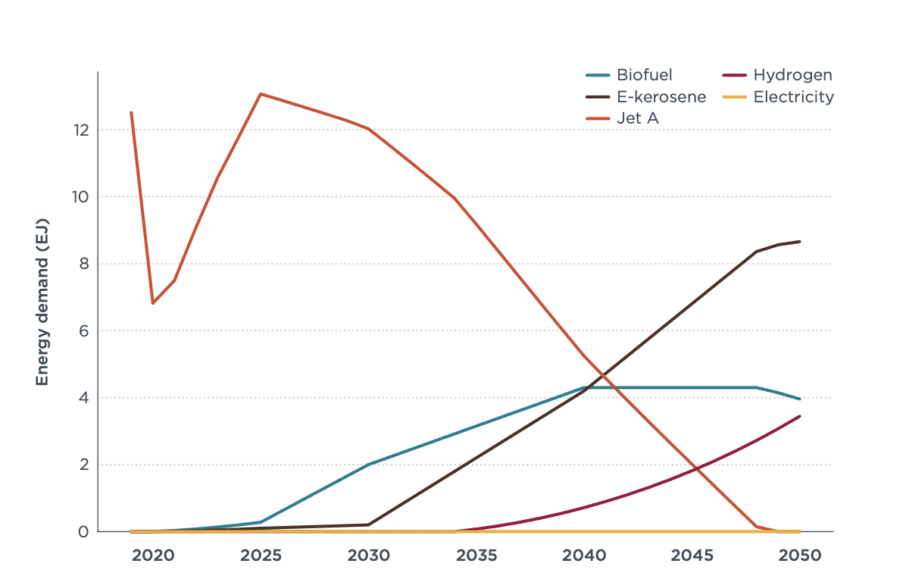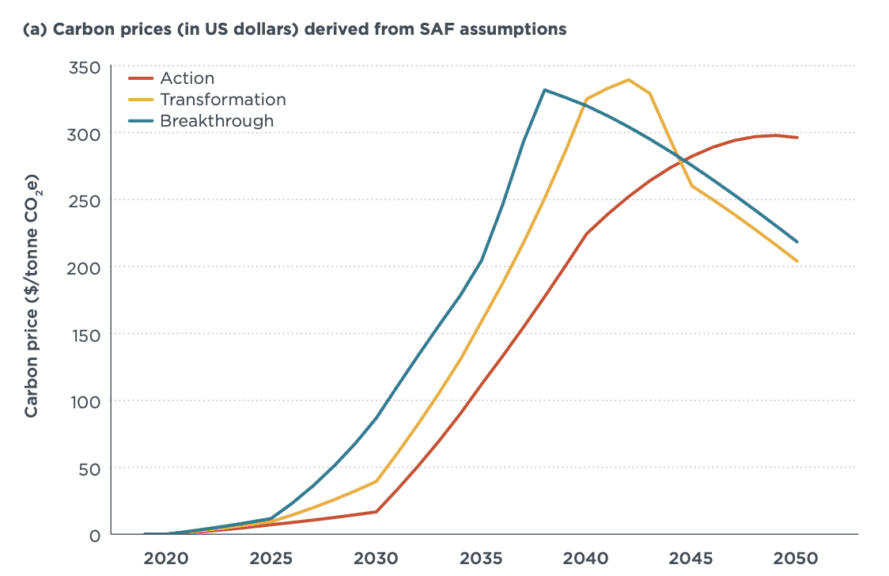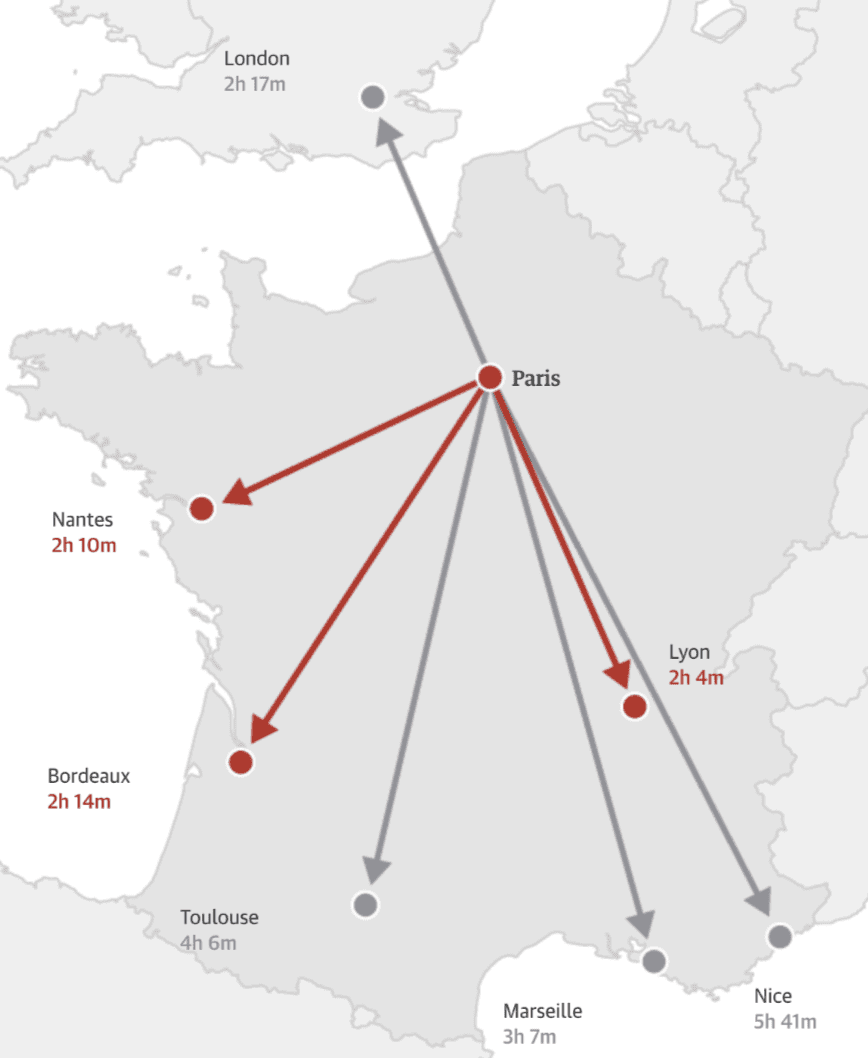Cleaner fuels, more than efficiency gains, are expected to drive aviation decarbonization in the decades ahead. Sustainable aviation fuel, or SAF, is an umbrella term used to denote “drop-in” alternatives to conventional jet fuel that can be used in today’s aircraft and engines. In the Vision 2050 analysis, SAFs could account for 62% percent of emission reductions under the most ambitious Breakthrough scenario. Similarly, a 2022 ICAO analysis estimated that SAFs could deliver 55% of the CO2 reductions needed. Such findings, while encouraging, come with caveats.
SAFs can be produced from a variety of biological feedstocks and renewable energy (also termed “power to liquid” or e-kerosene), with varying degrees of environmental integrity. Public policies intended to support the development of SAFs include a performance requirement: for example, the U.S. Inflation Reduction Act stipulates that only SAFs that produce a 50% reduction in lifecycle emissions compared to conventional jet fuel qualify for funding support under the law. This chart breaks down the direct and indirect emissions of potential SAFs and shows those fuels that meet a 50% reduction threshold.
Indirect emissions comprise two categories. Displaced emissions occur when a large industry’s securing of limited supplies of a low-carbon fuel is achieved at the expense of other industries, which then must resort to carbon-intensive substitutes. For example, if the palm fatty acid distillates (PFADs) – a fuel worse than conventional jet fuel (see above chart) – currently used in livestock feed are diverted to make aviation fuel, feed producers would likely turn to palm oil, whose total emissions are very high—higher than those of conventional jet fuel. Indirect land-use change (ILUC) refers to land use changes that occur when existing cropland is used to produce feedstock for biofuels. It results in the displacement of other agricultural activities, for example: in Brazil, as soy oil production increased, farmer’s pasture raising lands decreased. As a consequence, farmers moved their pastures to unclaimed forest land –creating a cycle of land displacement.
In sum, full life-cycle accounting of emissions from SAFs is necessary. Only SAFs that can substantially reduce GHGs after accounting for both direct and indirect emissions are likely to help decarbonize aviation.
SAFs will likely be rolled out over the near, medium, and long term as different types of SAFs mature.
Near term. Fuels produced from used cooking oil and beef tallow, known as hydro-processed esters and fatty acids (HEFA) fuels, are already available for use in aircraft. The HEFA process converts virgin vegetable oils, or waste fats, oils, and greases, into hydrocarbons through deoxygenation. It creates a hydro-treated vegetable oil that is chemically similar to kerosene and therefore requires little modification for use in an aircraft. As the chart shows, the GHG life cycle (direct and indirect) emissions of most HEFA fuels are half the levels of conventional jet fuel or less, and therefore qualify as SAFs.
The chief obstacle to the use of HEFA fuels is their limited supply. With competition from other transportation sectors that can also use HEFA fuels, ensuring a sufficient volume of HEFA fuels for aviation may be difficult.
Medium term. Advanced biofuels derived from agriculture and forestry wastes are expected to become more common in the medium term. These are not the biofuels made from food crops like corn and soybean that are still being used today but provide little emissions reduction benefits. Instead, advanced biofuels are made from waste residues such as corn stalks and forest branches that offer substantial GHG savings if harvested sustainably, i.e., in ways that avoid erosion and soil carbon loss. Because advanced biofuels are made from inedible (by humans) plants and parts of plants consisting mainly of cellulose, they are also referred to as cellulosic biofuels. The greatest opportunity in cellulosic biofuels may be to use “energy crops” such as willows and elephant grass. Fuels derived from these sources have much lower emissions from land use than food-based biofuels have; note the low emissions values of agricultural residues and forestry residues shown in the chart above. Food-based biofuels, made from crops such as corn, soy, rapeseed, and palm, do not meet the emissions criteria to qualify as SAFs (see chart).
Long-term. SAFs in the long-run are likely to be e-fuels and liquid hydrogen, which can offer large reductions in GHGs if renewable energy is used to make them. Both e-fuels and liquid hydrogen (LH2) fuels are made by using electricity to split water into hydrogen and oxygen, then combining the hydrogen with carbon dioxide to produce liquid synthetic hydrocarbon fuels that are chemically indistinguishable from the fossil fuels (diesel, methane, jet fuel) they are intended to replace; hence the term “drop-in” fuels. Producing these fuels requires substantial amounts of power, because the process is inherently energy inefficient. Around half of the input energy of the electricity used (56-63% for LH2 and 51-58% for e-kerosene) is lost in the production process. And while e-kerosene (as aviation e-fuel is known) and liquid hydrogen can be very low-carbon replacements for conventional fuel, that is true only if they are produced using truly renewable electricity – i.e., generated with zero carbon emissions. But alternative fuels produced using power from the U.S. grid (with current state policies) could be as much as twice as carbon intensive as fossil jet fuel. Further, additional amounts of e-kerosene and LH2 produced for aviation would be low carbon only if they’re produced using additional renewable power. Poaching renewable electricity from another use, if it must be replaced by non-renewable energy, is merely an accounting trick.

